 |
Mirador de Las Torres |
I used 40,000 American Air frequent flyer miles to go roundtrip from Seattle to Santiago, Chile from March 3 to April 24, 2011.
I began my visit to Chile, by staying in Santiago at the Plaza de Armas Hostel which overlooked the Plaza at a cost of $17 per night. This plaza is ringed by several beautiful buildings including the Post Office, Museum, City Hall, Metropolitan Church, and the Hostel building.
This sculpture is to commemorate the voyage of Christopher Colombus 500 years ago and to pay homage to the indigenous Indians who battled the Spaniards.
An Eco-friendly Building covered with plants.
Inside of the Cathedral Metropolitana
Horse mounted guards in front of the Palacio de la Moneda.
Train station
Statute of President Salvador Allende, who was overthrown by a coup supported by the CIA and the Nixon Administration, is placed in front of the Ministerio de Justicia.
The terremoto is a popular drink in Santiago at the local bars. It is a sweet wine drink filled with pineapple ice cream and served in a one-liter glass said to make your legs feel shaky---hence "earthquake" feeling.
Another popular drink is to order both a liter of beer with a Fanta drink--usually orange--and then as you drink down the beer, you top off your beer mug with the Fanta every time you drink more until you are finished.
From there it was easy to visit the various other tourist sites and experience major events that occurred daily ranging from protests to entertainment. Some included: protests and street theater against the anti-terrorist laws, Chilean pop star singer, music and dance performances, comedy shows, mimes, and street preachers and other religious events.
It was then on to the altiplano deserts of San Pedro de Atacama on a 12 hour night bus to experience some amazing natural sites such as the Geysers del Tatio, Valle de la Luna and the Lagunas Altiplanos with the flamingos and elusive vicuna.






Valle de Luna at Sunset
Flamingos at Laguna Chaxa
Laguna Miniques
El Tatio Geysers early morning.

Hot springs swimming hole.


A herd of vicunas.

Another night bus ride got me to Pucon, in the lush La Araucania region which is a world-class adventure sports destination for adrenaline junkies. I decided it would be fun to climb the Villaricca Volcano and do some zip line travel.
I paid $100 for both the volcano and zip line tours. We would leave early morning for the Villaricca Volcano hike outfitted with a snowsuit, crampons, ice ax, helmet, gloves, boots, sled disk, and gas mask. After a windy drive up to the mountain ski lodge, we boarded the ski lift just at daybreak. We would then climb up to the snow line and put on our crampons to continue up the very icy snow to the summit along with about four other groups.
We traversed carefully around the mountain top crevasses to the opening of the volcano which was spewing sulfur smelling smoke. Our leader said not to worry, the toxin levels were low this day.










The snow had softened in the sun and made for a very long glissade down this big snowfield on the green plastic disk.
I paid $100 for both the volcano and zip line tours. We would leave early morning for the Villaricca Volcano hike outfitted with a snowsuit, crampons, ice ax, helmet, gloves, boots, sled disk, and gas mask. After a windy drive up to the mountain ski lodge, we boarded the ski lift just at daybreak. We would then climb up to the snow line and put on our crampons to continue up the very icy snow to the summit along with about four other groups.
We traversed carefully around the mountain top crevasses to the opening of the volcano which was spewing sulfur smelling smoke. Our leader said not to worry, the toxin levels were low this day.




We put on crampons here as we got to the icy snow line.

Break time.

Mountain top crevasse

Looking into the volcano vent

Tossing some of my brother, Steve, remains into the Villaricca Volcano. One of the many memorable travel locations where I have placed my brother's remains who had died of a heart attack when he was just 59 years old. He said that he always wanted to travel with me, but he was just too busy with work. Now he is traveling with me.


The snow had softened in the sun and made for a very long glissade down this big snowfield on the green plastic disk.
After that, it was on to Valdivia where I enjoyed a dinner cruise on the Rio Valdivia to the Pacific Ocean and the old Spanish forts.



There were many interesting attractions including a waterfront market with lots of sea lions feeding off the castoffs from the fishmongers, and good views from the nearby hotel/casino.





This short bus ride took me out to the coastal areas where I saw lots of moored fishing boats.




There were many interesting attractions including a waterfront market with lots of sea lions feeding off the castoffs from the fishmongers, and good views from the nearby hotel/casino.





This short bus ride took me out to the coastal areas where I saw lots of moored fishing boats.

I then traveled to the Patagonia regions with a visit to Puerto Varas before heading to the heart of Patagonia.

When you first see this church, you would be transported to the Black Forest of Germany. This is the Inglesia del Sagrado Corazon which was designed after the Marienkirche in Germany. Lots of German immigrants found a home in Chile and other South American countries---including some Nazis who were hiding out from their war crimes committed during WW II.

There was a self-guided tour of about 10 historically preserved buildings throughout Puerto Varas. Here are two of them.


Anthony Bourdain ate at the Donde El Gordito and so did I. I had the abalone with a bowl of delicious crab soup.

After taking the short bus ride from Puerto Varas, I boarded the Navimag cruise ship at Puerto Montt for a four-day journey through the Chilean Patagonia Archipelago.

The Puerto Montt market



We, passengers, boarded on the car ramp and then took the large elevator up to the living quarters of this big ferry boat.

Here is a view of our elevator loaded up with some cars.

It would continue to be a wet, drippy journey through the Patagonia Archipelago until we arrived at Puerto Natales.



Our captain at the bridge navigating through a narrow passage.


Sunrise arrival near Puerto Natales

The Parque Nacional Torres del Paine mountains in the distance.

Here is a link to one of the rough Patagonia crossings as seen from the common living area: Rough Ride
Our Navimag ferry docked at Puerto Natales

City plaza

Dinner at the Afrigonia which is run by a Zambian-Chilean couple and the food reflects a fusion of their country foods. I am with some of the passengers I met on the ferryboat.

I stayed at the comfortable Hospedaje Nancy for $8 per night. I rented a sleeping bag from her for use in my hike in the Parque Nacional Torres del Paine. I planned to hike the “W” circuit named after the W shape on the map of the Park.

Here is the marked-up map that shows my route and stays at the three refugios. The refugios had bunks with foam mattress and I bought dinners from the restaurants there. Others could cook their own meals if they chose to.

A short stop to purchase tickets at the entrance to the park.

I hiked the ‘W” circuit from West to East and stayed overnight at Refugio Grey, Refugio Cuernos and the Hotel Torres del Paine. Major sites along the way was the Grey Glacier, Valle de Frances, and the Mirador del Torres. This 77 km trek included heavy rainstorms and hurricane-force winds with some spectacular sun breaks that highlighted the beauty of this park.
We first took a catamaran across this windswept lake to the start of the trail that would take me to the Grey Refugio and the glacier-filled Grey Lake.



At the trailhead















I traveled some of the Circuit "W" with "Hurricane Murray" who got knocked over from the strong winds about three times. He owns a breeding sheep in Australia so I learned a lot about selecting fine wools from him during our hike. You can see him in action in the video clip I included above.
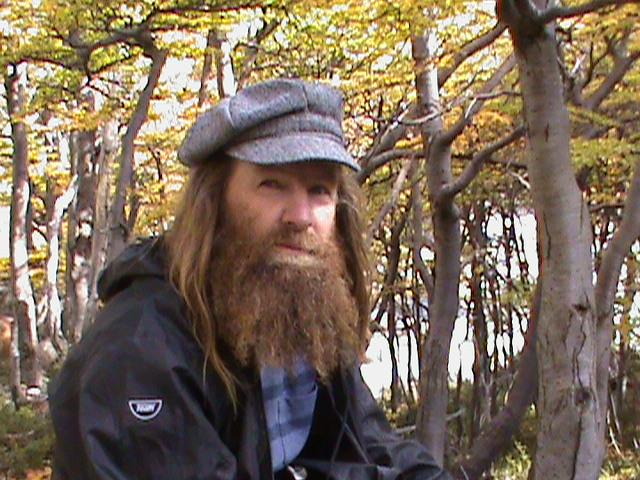






Lago Nordenskjold



This trail runs along the lake and the winds are almost hurricane force. I and others have fallen over when hit by gusts of wind. I lost my sunglasses when the wind blew them off and they went tumbling into a small lake along the way. There are 100 foot high wisps of spray that blow the length of the lake. They don't mention this in the tourists' books.

Now I am up to the most popular place in the Park on the way up to the Mirador de Las Torres.



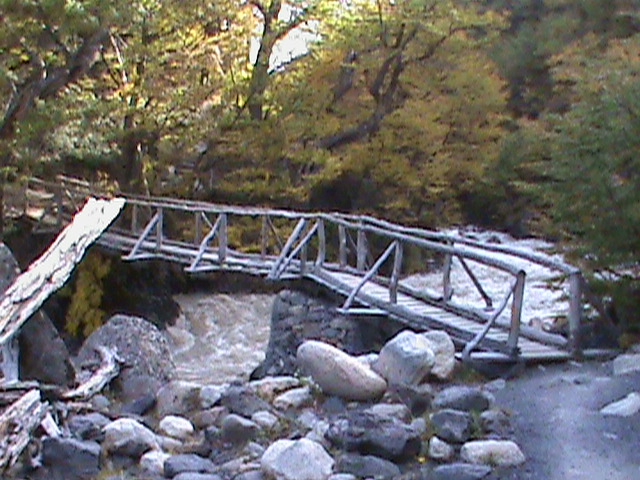

On my way up, I came across this group of tourists bringing down an injured Chilean guide who had gotten blown off the trail and injured his leg and head. This was about 2 pm and they ended up getting him down to the waiting ambulance by 10 pm.
They could not use helicopters because the winds were too strong. Apparently, he was trying to keep one of his tourists from falling off the trail when he got blown over instead. Other Chilean guides got the alert and came up the trail to spell off the tourists who had started the rescue operations.



Here is the ambulance that waited for the injured guide until 10PM.

I was planning to stay at the Torres Refugio, but it had recently burned down so they were letting us stay at the fancy hotel for the same price as the cost of the Refugio stays. Lucky for me, unlucky for the Refugio folks.


Leaving the Torres del Paine Park, I headed to Punta Arenas. I experienced a lot of rain interspersed with some snow so, after a quick tour of the area, it was time to head back to Santiago to warm up a bit before returning home.

There are still several original "wool Baron" mansions around the Punta Arenas area and a few are open to tourists. While a few made a lot of money from the wool trade, many ended up as workers and were shepherds who lived in these trailers staying with the large flocks of sheep.




At this cemetery, the wealthy built these large buildings to be entombed in while the less well off had to settle for the condo niches that outlined the cemetery.



One of my favorite lunch specialties were served at this restaurant. These sandwiches are called Lomitos and consist of lots of avocado, slices of pork, sliced tomato, onion, sometimes sauerkraut and/or cheese, mayo, and mustard on a huge hamburger bun. I enjoyed many lomito lunches and each place made them slightly different.


I then flew back to Santiago on Lan Air at a cost of $154 and took a short bus ride on to Valparaiso which is one of my favorite places in Chile with its steep streets and clustered housing. I loved the graffiti that decorated the walls throughout the city.


This is one of the many funiculars that transport people up and down the steep hills.

Here is the busy harbor of Valparaiso where I took a boat tour.


Here is the Monumento a los Heroes de Iquique--Naval martyrs.


The Edificio de la Comandancia Naval brackets the Plaza Sotomayor.

A group of us from the Casa Adventura Hostel enjoyed an evening of gathering and listening to the musicians at the old Cinzano Bar and Restaurant at the bottom of the hill in Valparaiso.


Grafitti is everywhere throughout Valparaiso and the city even commissioned some graffiti artists to paint some of the public structures around as well. The commissioned artwork is not as exciting to see as the local works.








Here is the commissioned artwork.

I am meeting Pablo Neruda, Chile's Nobel Prize winner in Literature in 1971, just before Pinochet's coup ousted Salvador Allende. Some believe that Neruda who had served Allende and others in various diplomatic postings had been poisoned while others say he died of cancer and a broken heart because of the Pinochet coup.

Neruda's house in Valparaiso

The two pictures below are of Neruda's home in Santiago.


My Harbor Tour with another enthusiastic tourist.

No travel through Chile would be complete without a tour of a winery, and Concha y Toro just outside Santiago is one of the most famous. It was founded in 1883, using grape plantings from France. Casillero del Diablo is one of the most popular bottlings sold throughout the world. As a part of the tour, we visited the Diablo caves where they aged this wine and sampled some as well after the white wine offerings.
The legend about the devil lived in the wine caves was started after the winery had experienced several thefts of wine. After the legend started, the wine thefts stopped from the Diablo Caves. Check out the link.
The legend about the devil lived in the wine caves was started after the winery had experienced several thefts of wine. After the legend started, the wine thefts stopped from the Diablo Caves. Check out the link.




That was the most enjoyable way to end my Chile Adventures.
Subscribe to my YouTube Channel
I have recently uploaded all of my travel videos to YouTube now that they allow longer uploads. I have also added other shorter travel videos.
That link is https://www.youtube.com/c/huntforgold
If you do go there, please subscribe to my video channel since it will help me eventually get some income there and help with my future travels.










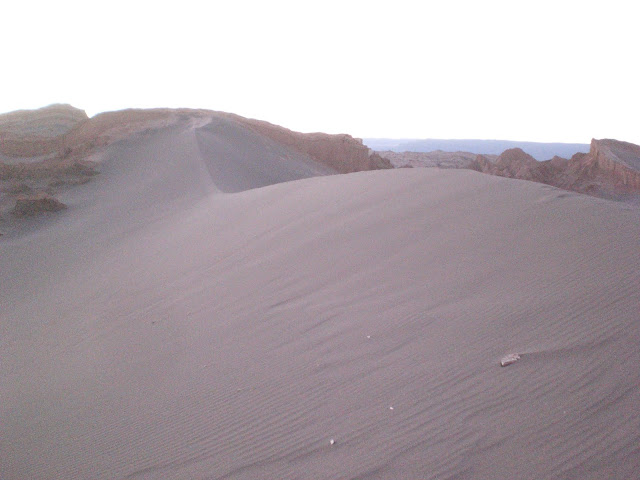

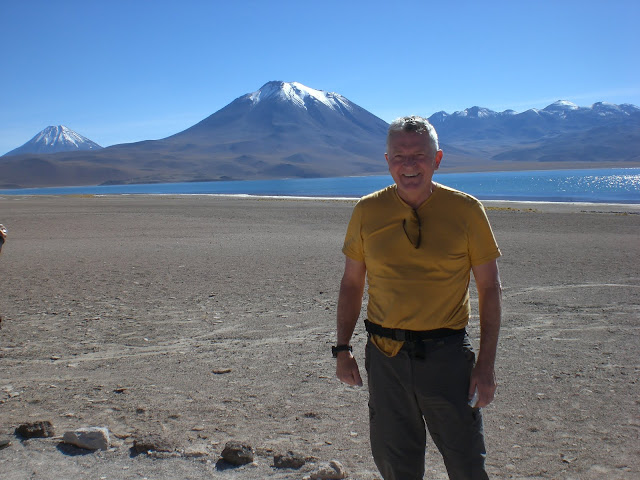
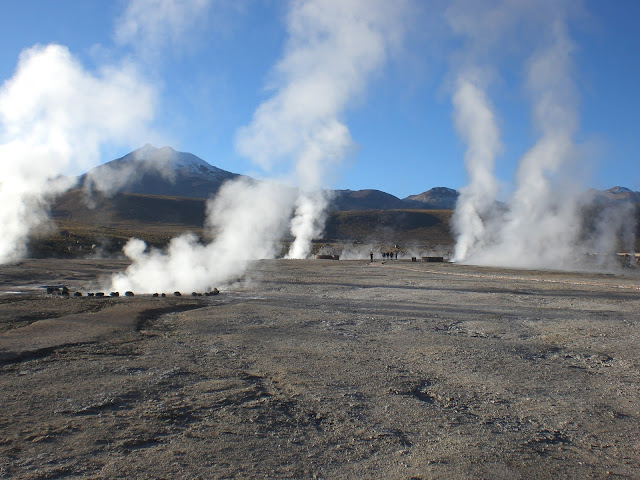


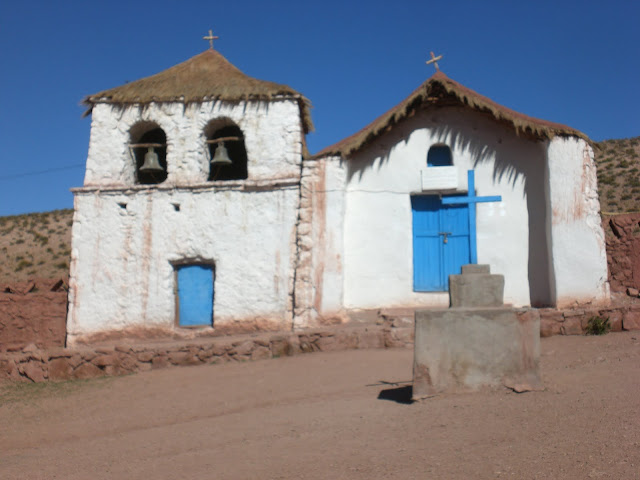








No comments:
Post a Comment